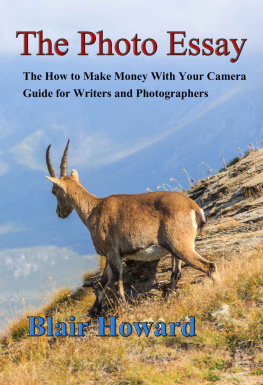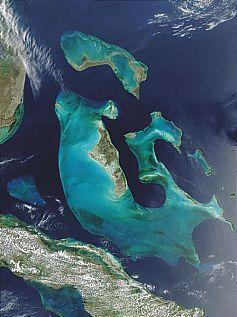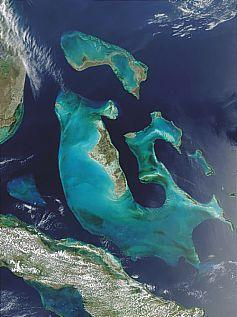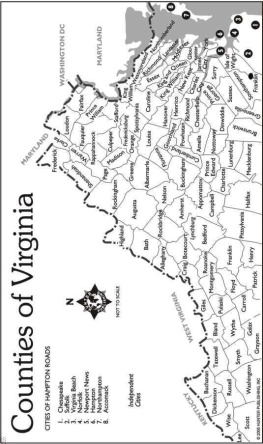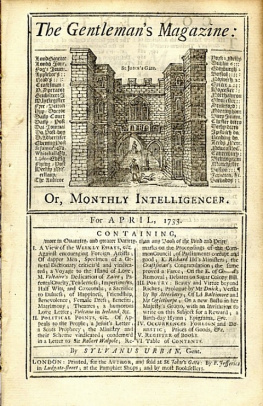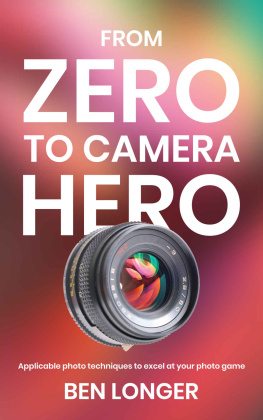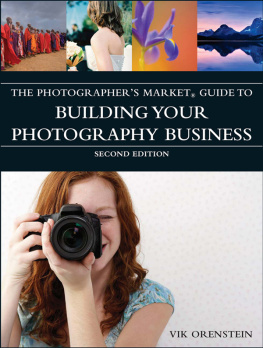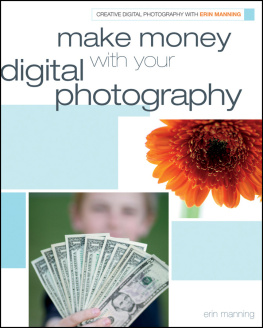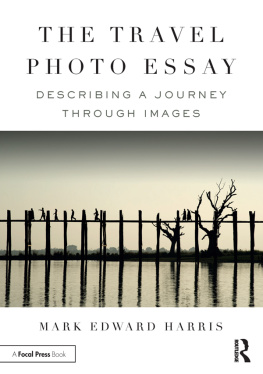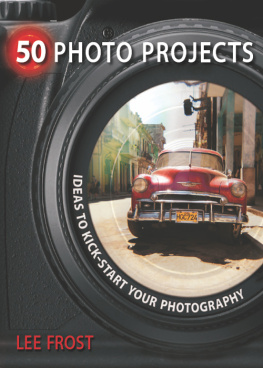Introduction:
So, you'reeither a writer or a photographer and youd like to make a little money fromwhat you do. Okay, lets talk a little about that.
You absolutelycan do this. For more than 30 years, I have been making a living from mywriting, and my camera. No, you don't need to be a professional photographer,and you don't need to be a great writer. What I am about to reveal through thepages of this short book are the techniques I have used to earn a great living.If you can string as few sentences together, and if you can take a reasonablygood photo, you have all the tools you need, right now, to do what I have done.
The photoessay, or photo feature as some like to call it, is not new concept. Its beena staple of the publishing industry even before Mathew Brady set up his cameraat the first Battle of Bull Run, and he didnt come up with the idea either.
The photo essayis, and always has been, a standard of the publishing world. Its not, however,something most photographers and writers would think of using as a way to makea living; I certainly didnt, not until it was literally shoved under my nose,and that was some 30-odd years ago. But I have taken it a step farther, severalsteps in fact. I have taken the concept and transferred it to the Kindleplatform. Does it work?
You bet. Lastmonth, January 2015, my paid sales and borrows totaled 1,628 units .
As I havealready mentioned, I have made a good living, and then some, selling photoessays from that day to this, and Im going to show you exactly how you can doit too.
Before weget too deep into the nuts and bolts of this thing, however, I should tell youa little about myself because I want you to know that I really do know what Imtalking about, and that what I am about to show you (the subject of this book)really does work; you can sell and resell your work and get paid each time itis read/downloaded. I will show you how to create photo essays that will selland resell and produce a steady income for you, year in and year out. And itworks just as well for writers as it does for photographers, maybe even better.More about that later.
Now for mystory. I think youll find it interesting: Many years ago, when I was justbeginning in the world of professional photojournalism, I was told by thosesupposedly in the know, that I was wasting my time, and that I should get areal job, because "You must pay your dues. It takes many years of knockingon doors before you can become an established contributor." And you know,I almost believed it. Today, I know for a fact that neither of those statementsare necessarily true. Oh yes, I did struggle for a while, but eventually I cameup with an idea that worked for me (and it will for you too).
For a couple ofyears I went through the system. I knocked on the doors and I did pay my dues,but I wasn't doing as well as I thought I should be. I was selling some of mywork; a picture or two here, and maybe another one there. I was making severalhundred dollars a month, but not enough to live on. I still needed to work asecond job in order to pay the bills. Hey, I even had a go at weddingphotography, but that wasn't for me
Then, one day,I was sitting at my office desk going through a package of slides (it was along time ago) just back from a picture editor: no sale! There was, however, apersonal note from the editor; just a few words, but those words changed mylife. They went something like this, "Sorry, no needs, try again. Greatphotography, though." Now this wasnt the first note like this that Idreceived; in fact, I received so many I lost count of them. At first, I thoughtthis guy was trying to let me down easy, but when I thought about it, I knewthat wasnt the case. You see, I was familiar enough with the publishingindustry to know that no editor will invite people to waste his time. If mywork was not good enough to publish, the editor now in question would not haveasked me to try again.
There wassomething else about that note, something I wasnt seeing. Then, two words inparticular caught my attention, "No needs," and it hit me; thiseditor hadn't said he wouldn't buy from me. He was telling me, "Send mesomething I need and I'll buy it." Right then, I knew I had the answer. Ihad stumbled upon the secret to success in this crazy business, and the funnything was: it was no secret at all. In fact, it was so obvious, so simple: Thesecret is this: All I had to do was figure out exactly what this editor, andhundred more just like him, needed and I would be off to the races.
But it wasntquite that simple. It took me a couple of months and a half-a-hundred phonecalls before I really had it figured out. In fact, it was another editor entirelythat shoved the answer right under my nose. The deal was, I was in his officeto deliver some images that would support a feature he was scheduled to run;guess what? He didnt have the feature. His writer had let him down. Now thatwas a let-down for me too, and he knew it. He was quiet for a moment, thenlooked across his desk at me and said: Why dont you do it?
I tell you, Ialmost laughed out loud. I wouldnt even know where to start, I said.
You have theplace to start right there in your hand, those images, said he. All you needdo is jot down some text to support the photos, just a sentence or two for eachphoto will do, and well run it as a Photo essay.
And there itwas. Within weeks of that offer, I had realized that I had found the answer tomany an editors needs. All I had to do was offer a complete package, photosand text; not much text either, just enough to support the images, as my manhad explained.
From that dayto this, I have specialized in producing photo essays. The photo essay is evenresponsible for my job at About.com. About.com was a New York Times companyeight years ago when I started work for them running the Golf Travel website;today the company is owned by Ask.com, but I am still running my golf travel sitefor them. Oh yes, I have more than 1500 photo essays on my About.com site, andI travel the world visiting golf resorts and golf courses, playing them andphotographing them, and it all began way back when in that editors office.
The advent ofdigital photography has been good for the freelance photojournalist, meincluded. Unfortunately though, the rates we now get for our images havedropped through the floor. Images that once brought in $300 to $500 dollarseach can now be purchased, online, for less than $20. Its very tough to make aliving just selling pictures.
Now for thegood news: all that makes what I do, and the photo essay, all that morevaluable. Editors at the great, and not-so-great, magazines and newspapers arestill demanding fresh and exclusive ideas: they are always on the lookout forsomething new, something unusual, and something interesting. The designmagazines, especially with the explosion of reality TV and its home improvementprogramming, are constantly on the lookout for new contributors. They need tofill space; they need to grab the interest of their readers/viewers; they needinteresting pieces that they can use to sell advertising. The photo essay istaylor-made for these people. All it takes is a little expertise and the willto win.

